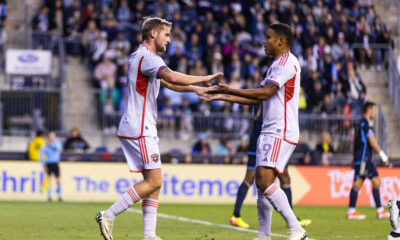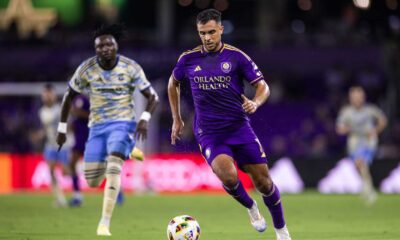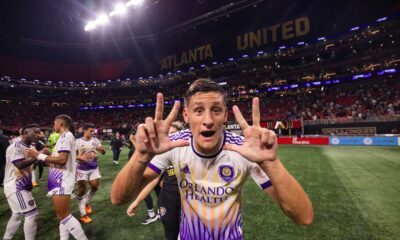Opinion
Opinion: Dante Vanzeir Punishment Shows There’s Still Too Much Tolerance of Intolerance
These incidents are too frequent, showing that our clubs, our league, and our sport can and should be doing more.
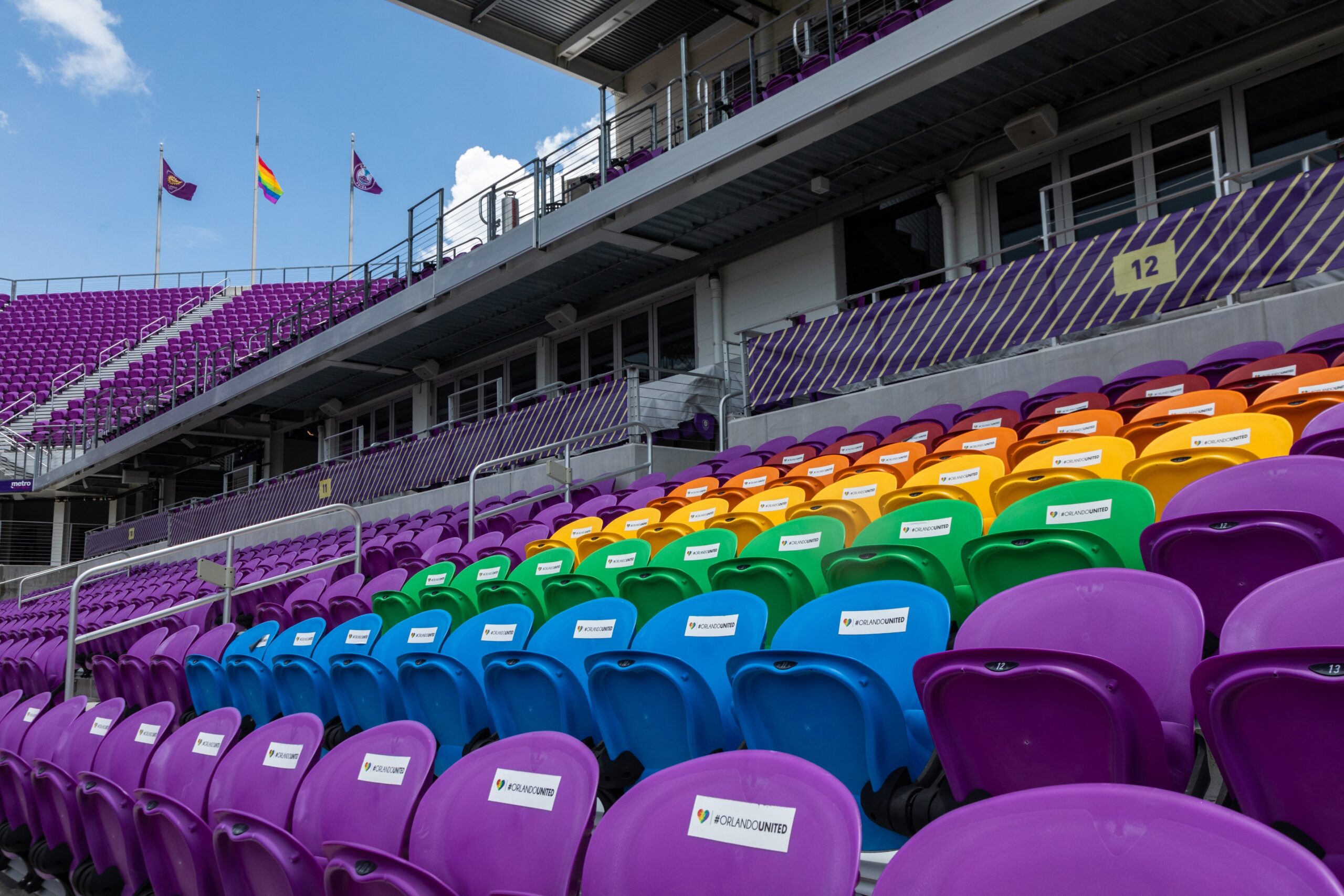
For as long as sporting contests are played by human beings, sports will always serve as a microcosm of society. As racism, oppression, and hate speech have no place in any civilized society, it has no place in sports, and yet we continue to see incidents of it both domestically and abroad. We (the royal “we,” that is) simply tolerate intolerant behavior far too often.
Whether this behavior is truly on the rise, if those who exhibit this behavior are being emboldened to do so lately by something, or if a refusal to put up with it any longer is simply leading to it being called out more often — or if it’s a combination of these things — is a matter for a much deeper study than this post will provide. The bottom line is that such ugly behavior is still being carried onto the pitch and it needs to stop. The vast majority of us are at least rational enough to know it needs to stop, and we want it to stop, but it isn’t stopping and those in a position to stop it or at least reduce its frequency are simply not doing so.
Major League Soccer recently had an opportunity to send a message about the use of such behavior on the pitch, but chose to send the wrong one. Last weekend’s match between the San Jose Earthquakes and New York Red Bulls went through a lengthy delay in the second half, when San Jose striker Jeremy Ebobisse, who is Black, said that a Red Bulls player — striker Dante Vanzeir, as it turned out — used a racial slur. Some pushing and shoving among the team’s players ensued, and referee Ismir Pekmic spent quite awhile gathering information.
During that time, it appeared that Red Bulls goalkeeper Carlos Coronel was informing manager Gerhard Struber what had taken place. Struber opted not to remove Vanzeir from the match. Vanzeir was shown milling about, smiling sheepishly. It’s impossible for people who weren’t on the pitch to know what information was being conveyed, so there was no proof that Struber was aware of exactly what took place, but the video didn’t paint him in the best light with the way things turned out.
The in-game investigation at Red Bull Arena by Pekmic also wasn’t immediately apparent to those in the stands, nor to fans around the league, and a photo of fourth official Chris Penso holding up a sign with more than 20 minutes of stoppage time went viral on social media. It’s simply not normal to see so much stoppage time tacked on. New York’s Tom Barlow scored in the 17th minute of injury time, and the game finished tied at 1-1.
News of why the match was stopped for so long eventually spread, and Vanzeir’s and Struber’s actions fell under intense scrutiny. Vanzeir reportedly owned up to saying something offensive, and the club announced soon after that the forward had “stepped away” from the team so as to avoid creating distractions. On Thursday, Vanzeir was suspended for six games and fined an undisclosed amount by Major League Soccer.
As a minor addendum, Vanzeir also may not play in the U.S. Open Cup, exhibition games or in MLS NEXT Pro matches during his suspension, and he must participate in training and education sessions. MLS purports to have “zero tolerance” for racist behavior on its pitch and in its stands, yet this punishment shows that the league has at least some tolerance for it.
As is usually the case, money is a central factor in this situation. MLS rosters are largely constructed around a small number of talented and expensive players the league calls “Designated Players.” Vanzeir is one of those and, as such, is a major investment by the club’s ownership. Kicking him out of the league or suspending the forward for the rest of the season would indeed send a stronger message, and one more in line with an actual policy of zero tolerance, but it would also likely have a competitive impact on both the Red Bulls and the Eastern Conference.
It would take time for New York to find and secure the services of a roster replacement. On-field results could impact attendance. Jobs could be lost both on the technical side and in other areas. I’m not unsympathetic to the club or its fans, but if this kind of behavior isn’t dealt with in a stronger manner, what is the incentive for teams to improve their vetting process when recruiting potential players? What serves as a deterrent for the next incident?
As for Red Bulls fans, many of them have recognized that there is an issue bigger than soccer at play. The supporters groups have been vocal proponents of harsher punishment for Vanzeir, even though it could hurt their team on the field. Empire SC immediately denounced the punishment as insufficient.
Vikings Army SC issued a statement that its members intend to walk out in protest at tonight’s match.
The South Ward issued a strong statement as well, calling for harsher punishment of Vanzeir and the dismissal of Struber, who was not punished by MLS. The South Ward also pointed the finger at the club for not doing more.
It is commendable to see fans put the need for social change above the success of their sports team. It’s also a shame that such actions are still necessary in this day and age.
Unlike the messaging from fans, the messaging that came out of this week from those in positions to do something was unacceptable on all counts. The league released a statement saying, “MLS has zero tolerance for abusive and offensive language and takes these allegations seriously.”
As mentioned above, six games looks a lot more like tolerance at a level much higher than zero. If the league truly wants to stamp out such behavior, it needs to do more than mandate some training and force a player to sit out for a few games. Similarly, if the league fails to act strongly enough, there is no reason why its member clubs can’t hold its employees accountable at a higher standard than MLS does.
Vanzeir’s statement Monday said: “I will do everything I can to be part of the change that needs to happen in this sport and our world. I also want to apologize to my teammates, coaches, the organization and our fans. I made a mistake and will take all the necessary steps to grow. While I did not intend to cause any harm or offense with my language, I know that I did and for that I am deeply sorry.”
This seems disingenuous when you consider that hate speech, by its very nature, is intended to cause harm or offense. There is no purpose for using it outside of inflicting harm/offense toward someone. None. While Vanzeir is Belgian and therefore a language barrier may exist to some extent, MLS mandates training for all players that should clearly indicate what is and is not permissible and this includes languages other than English.
Racist behavior, or sexism, or discrimination against others for sexuality, age, physical impairment, or any other reason may never be fully eradicated, but societal intolerance of it can be achieved. That requires widespread buy-in, regardless of monetary or time considerations.
The Vanzeir incident could happen anywhere and it has happened in many places, including other MLS cities. It could affect any club. As such, I reached out to Orlando City to inquire about what the league’s exact mandates are in terms of training players/staff on offensive language and what the club is doing. The club referred me to the league offices rather than get into specifics about what MLS and/or the NWSL require, however, an OCSC spokesman did respond with some insight as to what takes place at Orlando City SC, stating the club’s standards exceed what is required by the league(s).
“Each season, our club holds anti-harassment training and, as part of that, all players and all club staff (front office and technical) are given training on prohibited speech — across a number of languages — by our in-house and outside counsel. For us, this is something we are really proud of as it goes beyond what is required by either league, and we feel we are setting the standard for across MLS and NWSL. Overall, we’ve increased our investment in a number of trainings across the club, which again, all go beyond what is required by the leagues, but something we feel is very important in developing the best culture and expectations for our players and our staff members.”
I had also hoped to gain some insight as to whether there is some vetting process when the club is considering signing players, because that is important. After all, the club’s athletes and personnel will spend a great deal of time inside Exploria Stadium, a venue that includes 49 colored seats in a rainbow pattern. Those seats are in remembrance of the victims of the 2016 terrorist attack at the Pulse nightclub leveled at the LGBTQ community — a tragedy with effects that still ripple through our city.
In the history of sport, there have always been clubs that put more (or less) emphasis on the character of their players than others. The way soccer operates worldwide, and often on conflicting schedules, makes it difficult to perform due diligence to ascertain players’ attitudes, beliefs, and values. While I’m sure that some vetting takes place, it’s difficult to know the extent of that without more transparency.
It’s going to take the global soccer village to eliminate — or at least greatly reduce — these kinds of incidents. It’s certainly going to require leagues and clubs to deal with them more harshly. Beyond that, it’s going to take the entire global community to eliminate such behavior in society.
Progress has been made in many places but there’s still a long way to go. Even the lengthiest journey can be a worthwhile one.
Opinion
Likes and Dislikes from this Week of Orlando City’s Preseason
Let’s break down some good and bad things from this past week of preseason preparations.
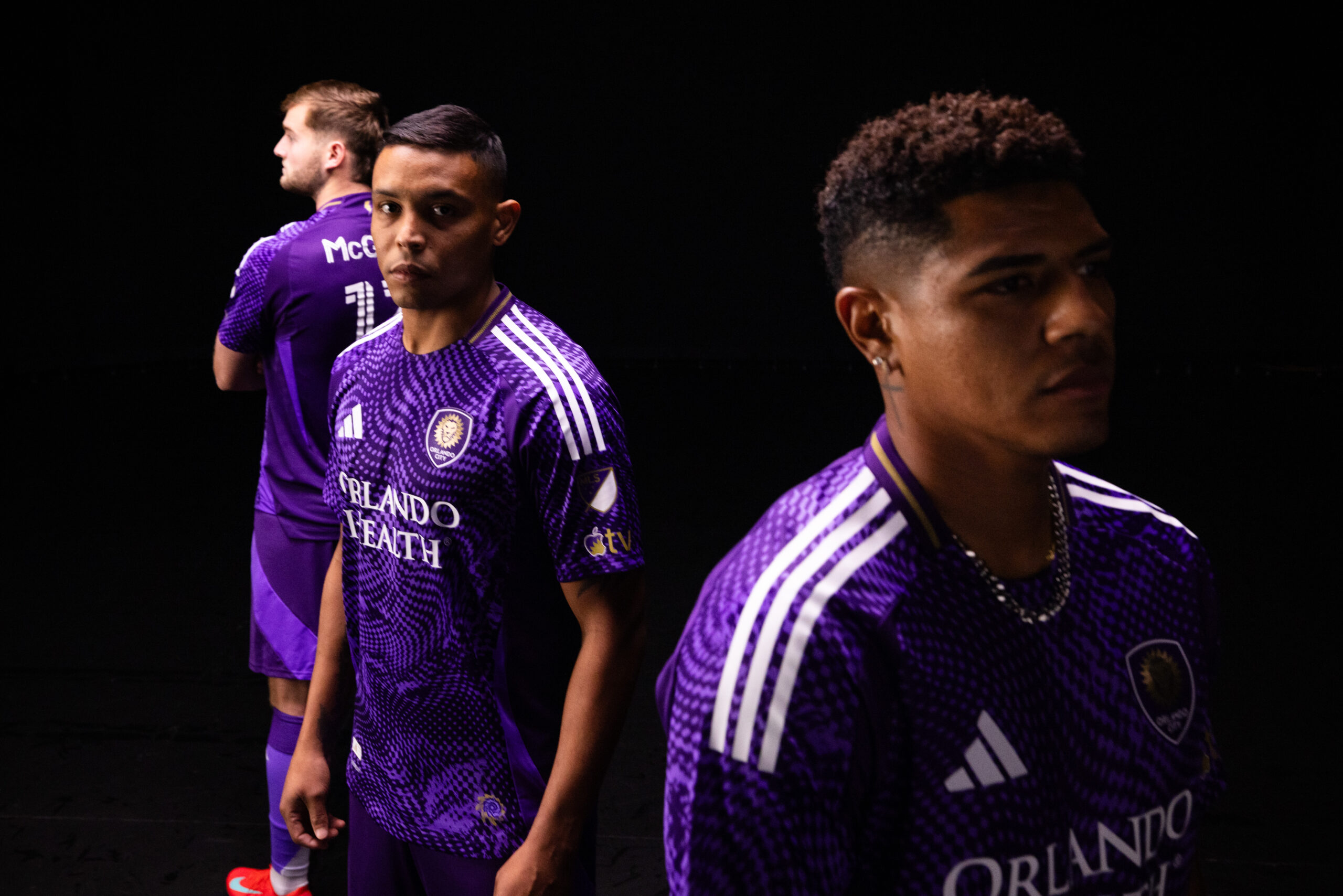
It’s Friday once again, and just like that we find ourselves barely over a week away from the start of the 2025 Major League Soccer season. It feels like this off-season has passed by in a blur, and somehow the Lions are already about to play their final preseason match later today. This week was another busy one for Orlando City, so let’s run through some things that I liked from this week and some things that I didn’t.
Likes
Eduard Atuesta Arrives
It took awhile, and the transfer saga had some twists and turns, but Orlando City landed Eduard Atuesta to replace the injured Wilder Cartagena. Given the league’s budget constraints and the fact that he isn’t a Designated Player, Atuesta is about as good a replacement as fans could have hoped for. Not only is he familiar with the league, but he knows what it takes to win here, as he helped LAFC win the Supporters’ Shield and U.S. Open Cup during his time with the California club. Plus, he theoretically offers more going forward than Cartagena typically does, which could add a much-needed extra punch to the Lions’ offense. The structuring of a one-year deal with an additional club option also gives OCSC some flexibility at the end of the season if the Lions decide they want to move on, but if he replicates the form he typically showed at LAFC, then that option year can be triggered.
New Kit Looks Sharp
The club also debuted its new home jersey this week. Dubbed the “Perfect Storm” kit, no two are supposedly alike, as it pays tribute to the intensity and unpredictability of Central Florida’s weather. For my money, it isn’t anything revolutionary, but there’s a lot to like about it. The pattern is interesting without being too overwhelming, the collar adds a pop of welcome gold to the purple and white motif, and the 407 lightning bolt and doppler radar storm patches are nice, vibrant touches. Teams were also permitted to customize the Apple logo on the sleeves this year, and Orlando chose to do so by incorporating the lion’s mane/sun element of the club crest into the logo. My biggest gripe is that the pattern is only on the front of the jersey while the back is plain purple, but overall I really like it.
Dislikes
Thin Cupboards at Striker and Fullback
Stop me if you’ve heard this one before, but Orlando City is still looking short on bodies at striker and fullback. Granted, the striker position will look better once Duncan McGuire returns, but that’s likely to be at least six to eight weeks away. Fullback isn’t quite as dire, as the Lions have Kyle Smith, Mikey Halliday, and Alex Freeman, who are all in contention to come off the bench. There are caveats though, as Halliday has struggled with injuries the last two seasons, and while Freeman was outstanding with Orlando City B last year, he’s almost completely untested at the MLS level. Plus, all three of Smith, Halliday, and Freeman are most comfortable on the right side. You obviously don’t want to take minutes away from the young guys, but I’d feel a lot better if there was a proven vet in the fold.
Final Preseason Match Prices
At the time of writing, the cheapest ticket listed for today’s preseason match against Inter Miami is $49 plus fees. That gets you in the door and up in the 300 level of Raymond James Stadium; any lower down than that and you’re looking at $65 plus fees and higher. It isn’t the most egregious pricing I’ve ever seen, but at the same time, when my season ticket in The Wall breaks down to being about $19 a game, it’s hard to not feel a little put off. I’m not saying that this is the club’s fault as I don’t know who set the pricing for the event, but I just don’t have much interest in paying over $100 for two people to go to a preseason match. It’s a shame, since Ray-J is about a five-minute drive from my house, but that’s the way it goes sometimes.
What stood out to you from this week of Orlando City’s preseason preparations? Be sure to have your say down in the comments. Vamos Orlando!
Opinion
Likes and Dislikes from this Week of Orlando City’s Preseason
Let’s talk through some of the good and bad from this week of the Lions’ preseason preparations.
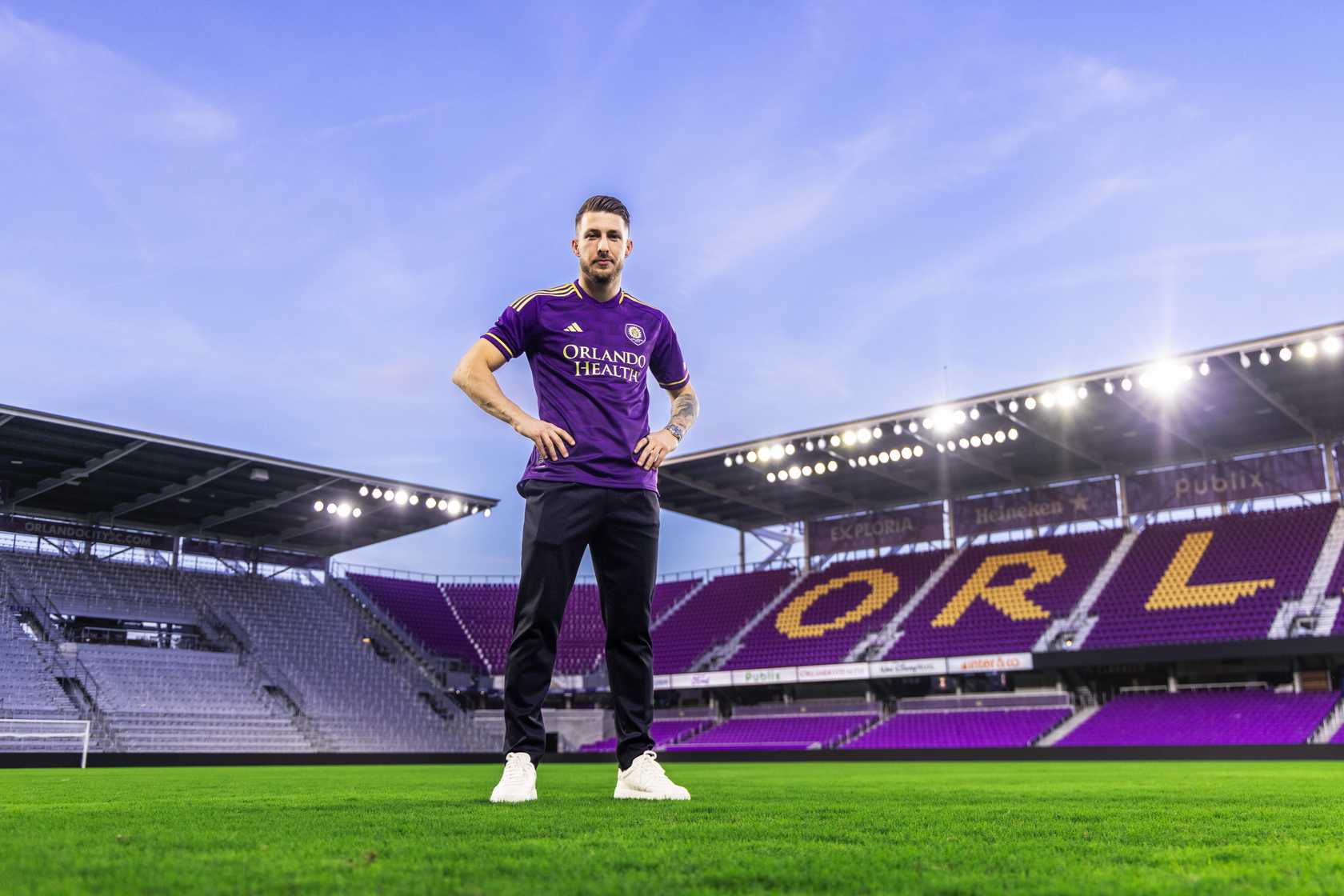
Just like that, another week of Orlando City’s preseason is in the books. We’ll be staring down the barrel of the season opener before we know it, but let’s make sure we take the time to stop and reflect on some good and some not-so-good things that took place this week.
Likes
Marco Pasalic Arrives
Orlando City is back up to three Designated Players after the club completed the signing of Croatian winger Marco Pasalic. It’s a piece of business that has been rumored for awhile now but took some time to get done and across the line. Between Pasalic and the previous signing of Nicolas Rodriguez, the Lions have got bodies to fill the right wing position. While neither is likely to be able to immediately replace the production of Facundo Torres on their own, they’re both young and will have the chance to grow their games and show what they can do.
Season Ticket Member Match
OCSC will take on CF Montreal Saturday in a preseason scrimmage which is an event exclusive to season ticket holders. This is the sort of thing that I, along with my fellow season ticket members on staff, love to see. An event that rewards you for that membership and does so by giving you an extra peek at the team before everyone else. It might not be some wildly extravagant event, but it doesn’t need to be. The club has formed a habit of designating one of the preseason scrimmages a season-ticket-members-only event, and for my money, it’s been a good call.
Dislikes
Closed Door Scrimmage Radio Silence
This feels a little nitpicky, as closed-door scrimmages are by their very nature, closed door. The whole point of them is to not have a ton of access and insight about what’s going on, and teams will often agree beforehand about what level of information, if any, will make its way out to the public afterwards. We know that Orlando took on Atlanta United in a preseason scrimmage Wednesday, and we know that Alex Freeman put in a goal from a header, thanks to a post from the club on the website formerly known as Twitter, but that’s about it. It feels greedy to ask for information from something we weren’t guaranteed to get any from in the first place, but the brief taste has me wanting more, damnit.
Depth Still a Worry at Several Positions
As stated above, getting Pasalic in the door means that the Lions now have the winger slots fairly well stocked, but there are still other areas on the field that could use some reinforcement. The most crucial of those remains defensive midfielder, and although the rumored arrival of Eduard Atuesta would help considerably, I’m not counting him as a Lion until pen has been put to paper. If he does get signed, that still leaves striker and fullback perilously thin when it comes to guys who are proven MLS-caliber players, and the first game of the season is just shy of two weeks from now. There’s still time to do business, but the clock continues to tick.
What jumped out at you from this week of OCSC’s preseason? Be sure to have your say down in the comments. Vamos Orlando!
Opinion
Likes and Dislikes from this Week of Orlando City’s Preseason
Orlando City’s third week of preparation had some good things and some not so good things.
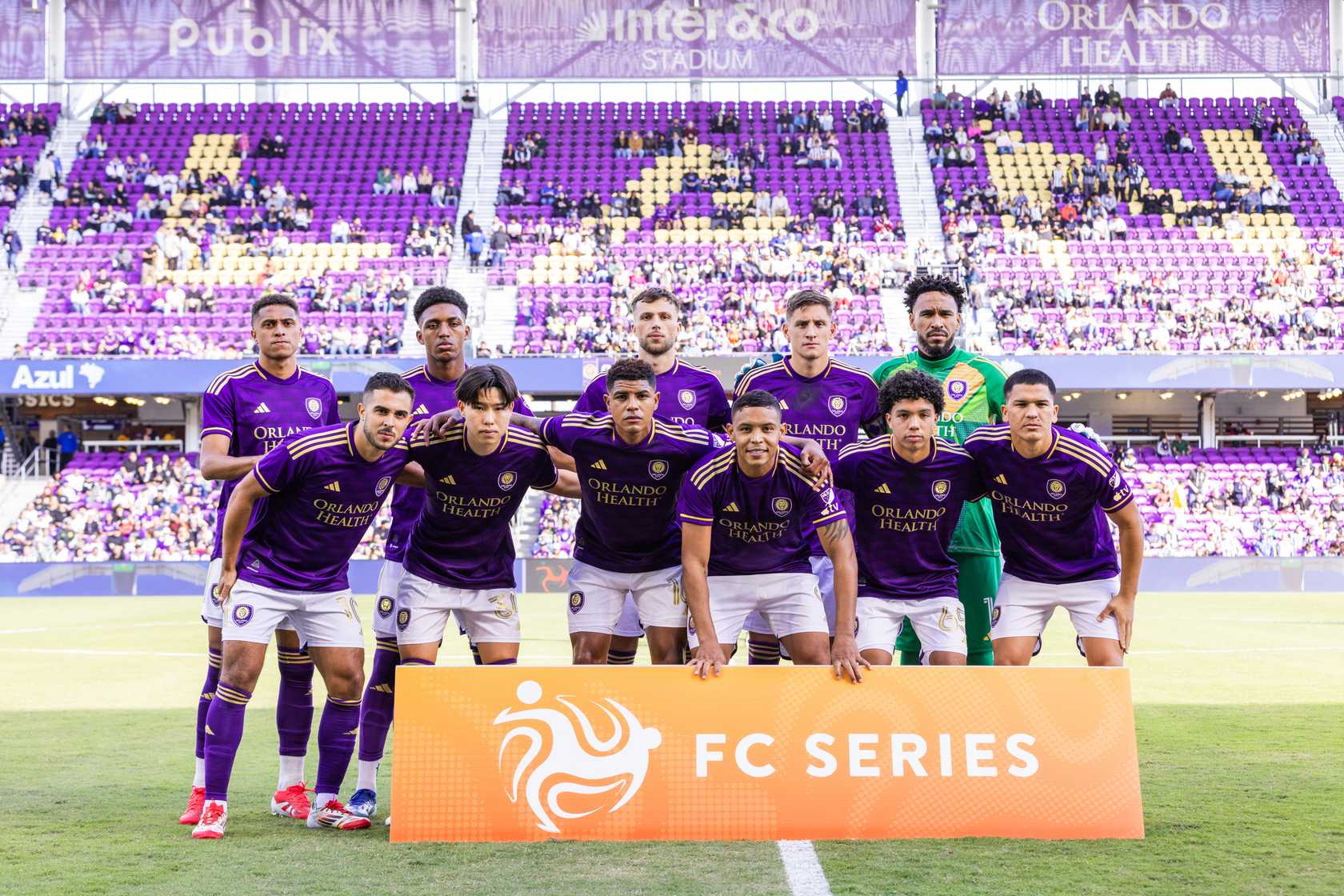
We have another week of Orlando City’s preseason in the books, and while it seems hard to believe, it’s been almost three weeks since the Lions got back in the lab and started preparing for the 2025 campaign. There have been lots of new talking points this week too, and its been a bit of a mixed bag. Let’s have a look at some of the good and bad from this past week.
Likes
Victory (Kind of) vs. Atletico Mineiro
Okay, so it technically wasn’t a victory since the game ended in a scoreless draw. The Lions did get the job done from the penalty spot though, as they won the shootout 6-5 to claim whatever the Inter&Co Trophy is. More important than the result though, was the fact that OCSC played pretty well. Orlando created a good amount of opportunities, but as seems to be the fatal flaw with this team, the finishing was definitely on the rusty side. It was perhaps unlucky that some of the Lions’ best chances fell to youngsters, but the good news is that the chances were being created. It was a positive first showing that the team can hopefully build on.
Back in the U.S. Open Cup
A lot of fans, myself included, had big issues with the Lions not being a participant in the U.S. Open Cup last year. It’s a tournament that is near and dear to a lot of Orlando fans, given that OCSC has won the whole damn thing once, had other special moments like The Running of the Wall, and has generally made decent runs in the competition. It was welcome news to hear that Orlando will be back in the competition this year, along with 15 other MLS teams that will enter the competition during the Round of 32. The tournament has a charm and a special place in my heart, and it’s exactly where the Lions should be.
Two Games, Two Clean Sheets
Nic Josey has gone on the record stating that Orlando City will need strong, steady performances from its defense if the team wants to avoid a slow start to the season like we saw in 2024. It’s only preseason, and we shouldn’t get too carried away, but so far so good, as the Lions have recorded a clean sheet in each of their two preseason games. Whether that will mean a damn thing once the regular season starts is anyone’s guess, but it’s a hell of a lot better than giving up buckets of goals in the preseason.
Dislikes
Wilder Cartagena’s Injury
We still don’t have official confirmation on the injury that Wilder Cartagena suffered during Saturday’s preseason match, but all the reports point to an Achilles Tendon injury, with ESPN’s Diego Montalvan going as far to say that he’ll be undergoing surgery. If that proves to be the case then it’s a doomsday scenario indeed for the Lions, as Cartagena could miss anywhere from six months to a whole year. He’s proven to be a vital part of what makes Orlando City tick, and replacing him is going to be far from an easy task.
Summer Fixture Frenzy
Along with the U.S. Open Cup, the Lions will once again be participating in Leagues Cup, and that’s presented them with a hellish slate of matches to finish out the summer. In a stretch from mid-July to mid-August OCSC will play a positively hellish eight games in 29 days, with that number potentially rising even higher if the club goes deep in the Open Cup (unless the two competitions decide to play nice and work with each other on scheduling). Not to mention that six of those eight games will take place at home in the punishing Florida heat and humidity. Either some guys are going to need to get signed, the kids are going to get some good experience, or something is going to give. Speaking of…
The Continued Wait for Reinforcements
Orlando City has made a couple signings in the last two weeks, with the most notable of those being winger Nicolas Rodriguez, with goalkeeper Carlos Mercado getting re-signed on Thursday. That’s a start, but Cartagena needs to be replaced, Jack Lynn’s retirement and Duncan McGuire’s shoulder injury mean the striker corps is dangerously thin, and the team could use help with depth at midfield and fullback. That’s a hell of a lot of business that needs to get done, and there hasn’t been much in the way of substantive chatter in the transfer rumor mill lately. The sooner signings are made, the more time they have to get integrated with their new surroundings before the season starts, but time is fast running out for that to happen.
There you have it folks. Life is full of peaks and valleys, and this week for Orlando City was a good reflection of that. What things jumped out to you this week, and what are you hoping to see as we move into the fourth week of preseason? Be sure to have your say down in the comments. Vamos Orlando!
-
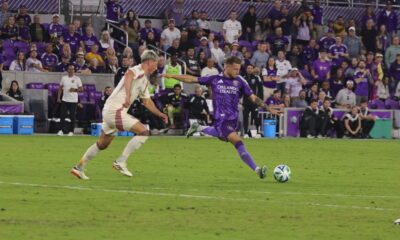
 Orlando City2 weeks ago
Orlando City2 weeks agoOrlando City vs. D.C. United: Final Score 4-1 as Lions Blast D.C. at Home
-
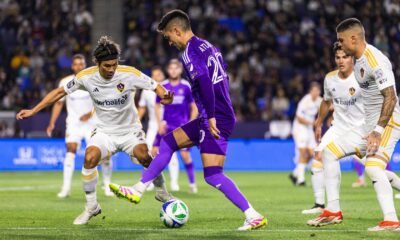
 Orlando City5 days ago
Orlando City5 days agoOrlando City vs. LA Galaxy: Final Score 2-1 as Cardiac Cats Score Late to Earn First Road Win
-
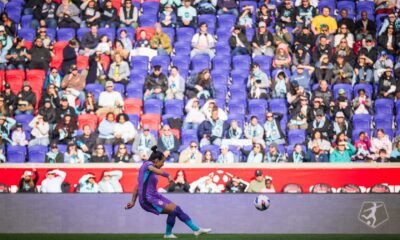
 Orlando Pride2 weeks ago
Orlando Pride2 weeks agoOrlando Pride vs. NJ/NY Gotham FC: Final Score 2-0 As Pride Take Three Points Away From Home
-
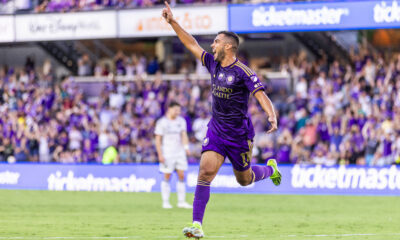
 Orlando City2 weeks ago
Orlando City2 weeks agoOrlando City vs. D.C. United: Preview, How to Watch, TV Info, Live Stream, Lineups, Match Thread, and More
-
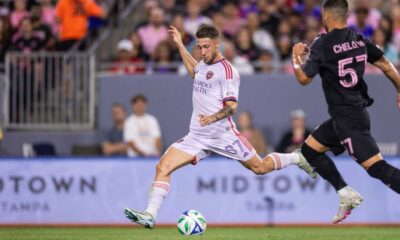
 Orlando City1 week ago
Orlando City1 week agoOrlando City’s Offense Looks Different With Marco Pašalić on the Right
-
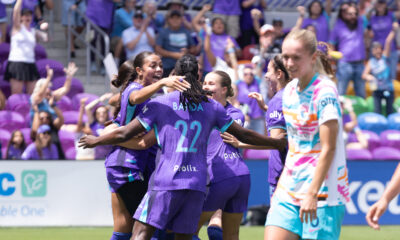
 Orlando Pride6 days ago
Orlando Pride6 days agoOrlando Pride vs. San Diego Wave FC: Final Score 2-1 as Pride Win Third Straight
-
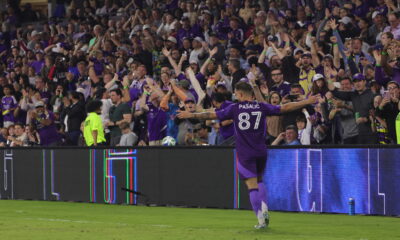
 Orlando City2 weeks ago
Orlando City2 weeks agoOrlando City vs. D.C. United: Five Takeaways
-
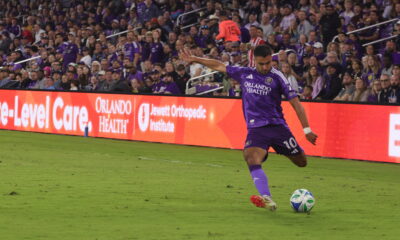
 Orlando City2 weeks ago
Orlando City2 weeks agoOrlando City vs. D.C. United: Player Grades and Man of the Match


